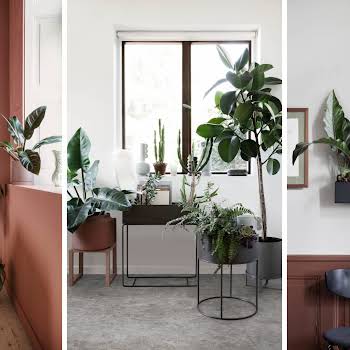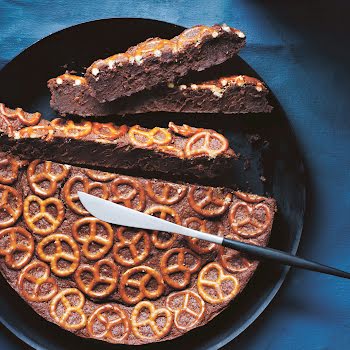
By IMAGE
05th Apr 2021
05th Apr 2021
Overwatering and underwatering are the main causes of plant death. Here’s how to get it just right.
When you are ready to water, give your plants a good soak. Ideally, all pots should have drainage holes and you want to provide enough water so that it runs freely out of the base of the pot each time. Empty the saucer about half an hour after you have watered to ensure the plant isn’t sitting in stagnant water. Lukewarm water is best – too cold and it can shock your plant.
Re-filling your watering can after you’ve finished watering means the next time you go to water you will have room-temperature water that has also had time to purify. Letting your tap water sit out for at least 24hours allows chlorine and other harmful minerals to dissipate and makes it more friendly for your sensitive friends, such as Calathea and palms. If you really want to treat your indoor plants, getting them outside when it’s raining – or even collecting rainwater to water with inside – will give them a beautiful boost.
This liquid gold is what they’re used to drinking in the wild and is free from the chemicals and minerals found in our tap water that can build up in the soil. If you do take plants out to water, just be sure to bring them inside before it gets too cold or too hot. Sudden drops in temperature and direct sun on precious foliage can cause irreversible damage in a fairly short amount of time.
Along with light, plants need water to survive and indoors they rely on us to appropriately meet their liquid needs. It is probably the area of plant maintenance that confuses and stresses new plant parents the most; no doubt you’ve heard how many plants have met an untimely death due to overwatering. However, with a greater understanding of the role water plays in sustaining plants, as well as the factors that can affect the rate at which a plant absorbs water, you will be better placed to water more effectively and avoid some of the pitfalls of over and underwatering your plant babies.
When an indoor plant is receiving the right amount of light and is potted in a mix that is adequately aerated, it will absorb water through its roots effectively, delivering nutrients and minerals to where they are needed most and filling out plant cells (along with cellulose) providing good structural support for stems and foliage. Overwatering essentially drowns your plant, as it stops oxygen from being able to reach the roots and puts your plant at risk of root rot (while under-watering will slowly starve your plant of the moisture and minerals it requires). When watering is inadequate a plant will often communicate distress either by dropping leaves or presenting with browning or yellowing foliage.
All plants require different levels of watering. It’s impossible to say that a specific plant needs to be watered once a week or once a fortnight, as there are so many different variables. How big is the pot the plant sits in? A larger pot will generally dry out less quickly. Is the pot exposed to heat sources such as direct sunlight? Is it a little close to a heater, which will dry out the soil faster? Is the pot placed among a group of other plants? This proximity will increase humidity and keep your plant’s soil moist for longer.
The absolute best way to test the moisture level of your plant’s soil is to simply press your finger a few inches into the soil and feel how much has dried out. Do this every few days until you begin to understand its needs. Most (not all) tropical indoor plants like the first couple of centimetres (an inch or so) of soil to have dried out before watering again. Always check the specific water requirements your plant needs, and then be sure to adjust them according to the seasons (ie. water less often in winter when the soil is likely to dry out more slowly and plants tend to go through more dormant growing periods). If you’re not feeling super confident about your moisture-sensing abilities or have plants in awkward-to-reach places, a water meter will be your friend. Simply insert the prong into the soil and it will give you a clear reading of moisture levels, which you can then use to decide whether your plant is ready to water again.

Extracted from The Leaf Supply Guide to Creating Your Indoor Jungle by Lauren Camilleri & Sophia Kaplan.























